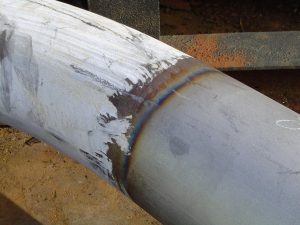High corrosion resistance
Duplex stainless steel is mainly used in the chemical, petrochemical and offshore industries because of its mechanical properties and high resistance to corrosion. As a result of this high resistance to many types of corrosion, especially stress corrosion, Duplex is preferred to austenitic stainless steel.
What is Duplex stainless steel?
Duplex is a special stainless steel alloy with a high corrosion resistance. Duplex contains, among other things, chromium and molybdenum. In addition, a certain percentage of nitrogen is also present. This composition ensures that Duplex can be used in conditions where other metals and alloys would be affected rapidly. Due to its specific properties, Duplex is not always easy to process.
Stress corrosion
Yet, practice has shown that Duplex becomes sensitive for stress corrosion under certain critical environmental conditions. This is certainly the case under conditions of high temperatures in combination with chlorides and low pH. The corrosion resistance of Duplex, just like other highly alloyed chromium steels, is governed by the presence of a chromium oxide film that is formed as a result of the reaction between the chromium and the oxygen in the air. This chromium oxide is strong, passive and homogeneous, resulting in the underlying material being protected by the passive film. This chromium oxide film can be disturbed by the presence of contaminants on the surface and especially by the presence of thermal oxides. The thermal oxides are formed during processes such as welding and annealing. There is no adhesion between the thermal oxides and the underlying material. The thermal oxides are porous and interfere with the formation of the passive chromium oxide film. This stops the underlying material from being protected in certain places and, hence, lowers the corrosion resistance of the material.
Surface treatment
A surface treatment is necessary to remove these undesired thermal oxides from the stainless steel and the most common one is a chemical surface treatment. It is known that the corrosion resistance of the stainless steel (and Duplex) after a chemical pickling process will completely be restored. All undesirable contaminants, such as thermal oxides and foreign iron particles, are removed by means of the pickling treatment, so that a homogeneous passive chromium oxide film can be formed at the interface with the air. The standard pickling process consists of the treatment of the stainless steel with a mixture of nitric acid and hydrofluoric acid.
